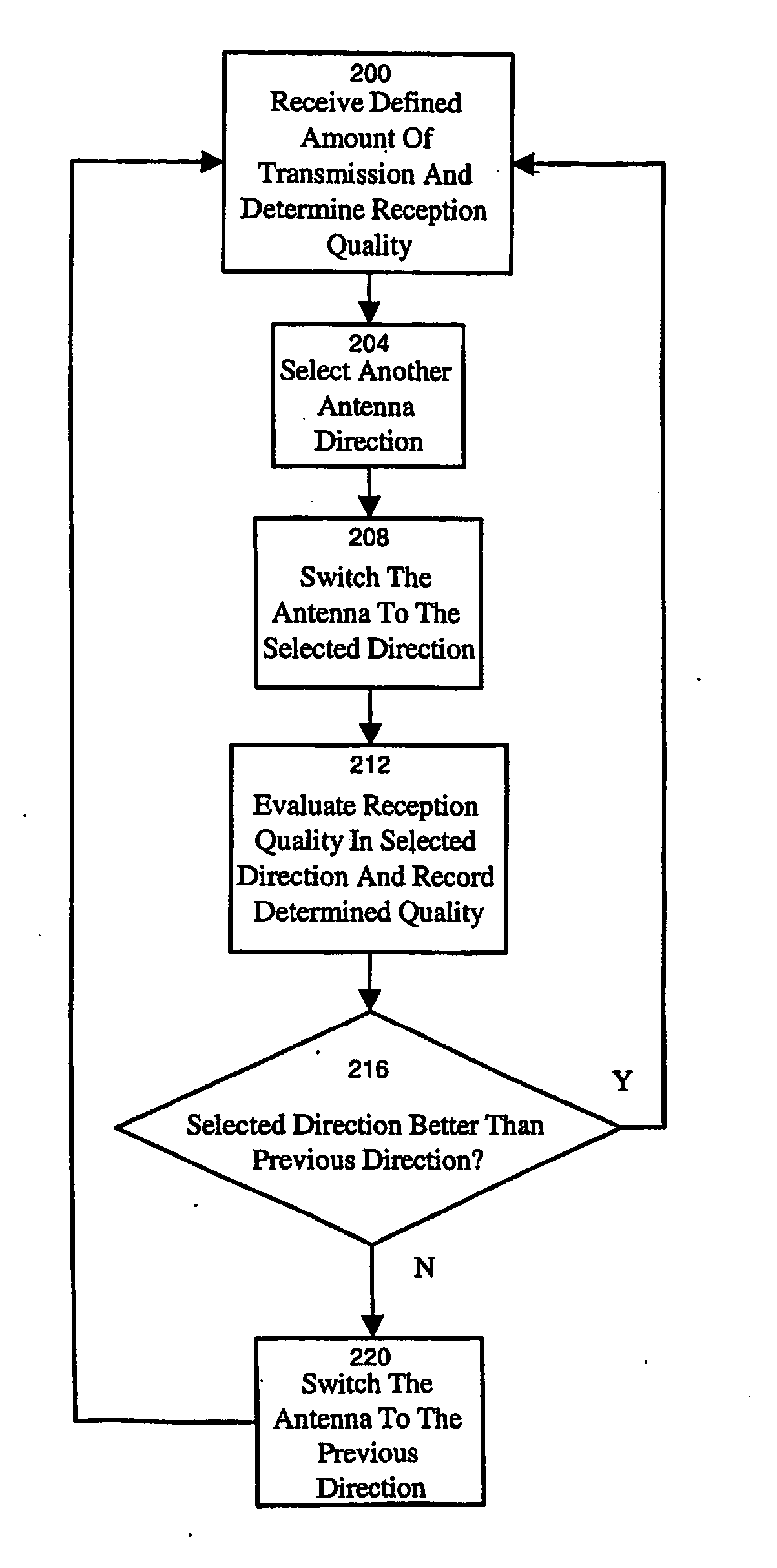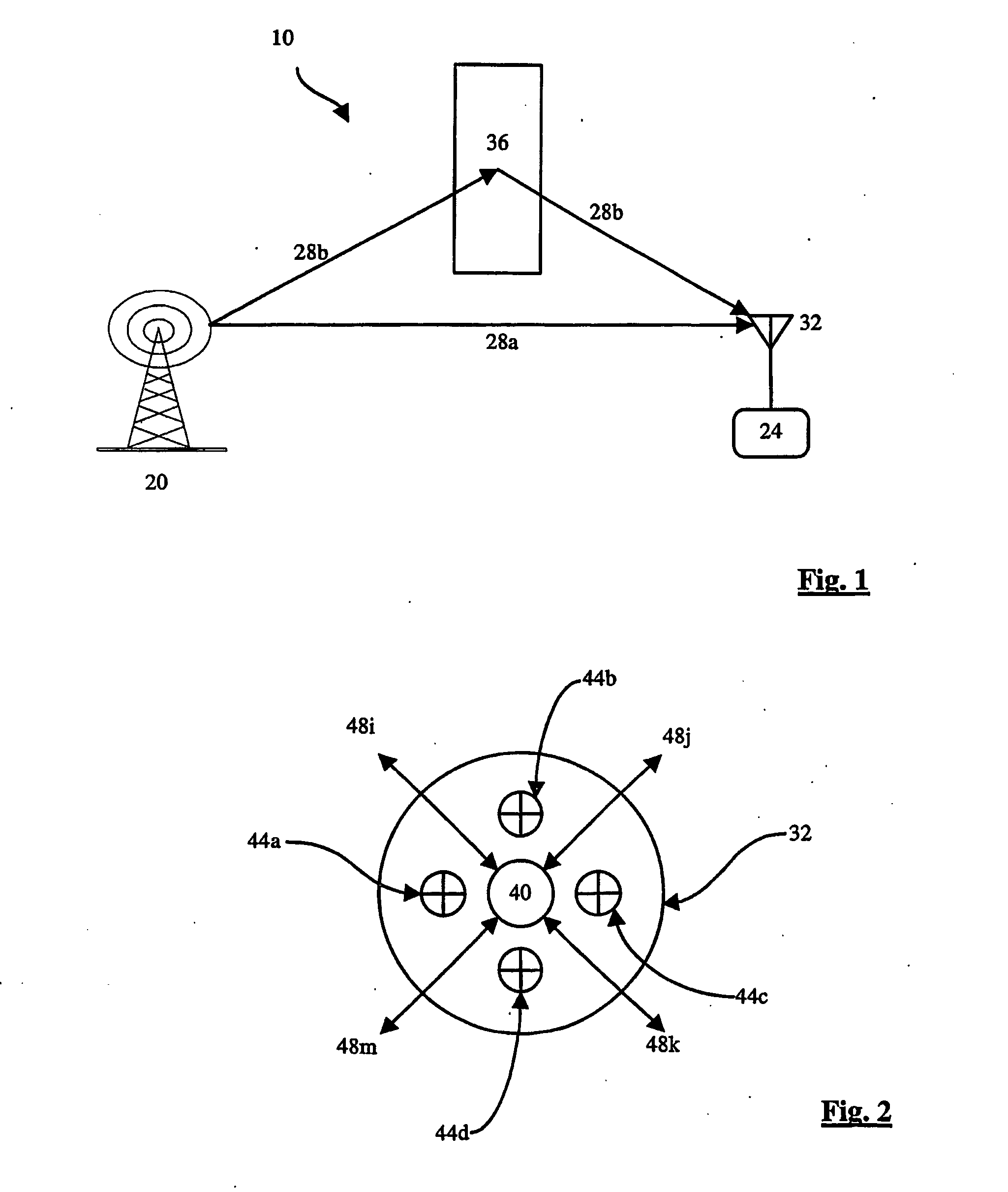System and method for mitigating fading of a signal at a radio receiver
- Summary
- Abstract
- Description
- Claims
- Application Information
AI Technical Summary
Benefits of technology
Problems solved by technology
Method used
Image
Examples
Embodiment Construction
[0043]FIG. 1 shows a communications network 10, such as a wireless local loop system, including a first transceiver, such as base station 20 and a second transceiver, such as subscriber station 24, which are communicating by a radio signal 28 in accordance with an embodiment of the present invention. As is known, radio signal 28 typically travels over many signal paths 28 (for clarity only two signal paths 28a and 28b are shown in the Figure) before being received at an antenna diversity mechanism of subscriber station 24. As shown in the Figure, signal path 28b is a greater distance, the signal having been reflected off of an object 36 such as a building, than signal path 28a which is a direct path. If the present invention was not employed, a fade could be experienced at subscriber station 24 when the signals arriving over paths 28a and 28b, etc., tend to cancel each other at subscriber station 24 through destructive interference.
[0044]FIG. 2 shows an embodiment of antenna divers...
PUM
 Login to View More
Login to View More Abstract
Description
Claims
Application Information
 Login to View More
Login to View More - R&D
- Intellectual Property
- Life Sciences
- Materials
- Tech Scout
- Unparalleled Data Quality
- Higher Quality Content
- 60% Fewer Hallucinations
Browse by: Latest US Patents, China's latest patents, Technical Efficacy Thesaurus, Application Domain, Technology Topic, Popular Technical Reports.
© 2025 PatSnap. All rights reserved.Legal|Privacy policy|Modern Slavery Act Transparency Statement|Sitemap|About US| Contact US: help@patsnap.com



